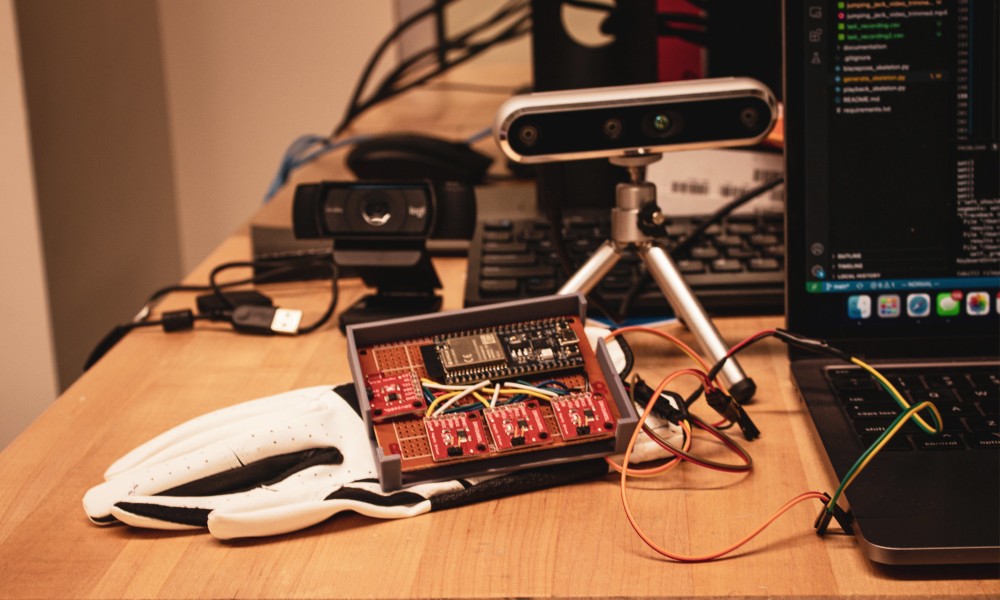Students develop a wearable computing system for at-home physical therapy
News
Almost everyone will visit a physical therapist at some point in life, whether for a sports injury, a hip replacement, or chronic back pain. For JMU engineering professor Jason Forsyth, this moment came 10 years ago when he suffered a back injury. The experience led Forsyth to start brainstorming ways physical therapy could work to serve patients more efficiently.
“I just kept thinking, are there better ways to get feedback on the [physical therapy] process, and are there better ways to know if I’m doing my exercises correctly?” Forsyth said.
Using his background in wearable computing, Forsyth came up with a potential solution. He is now leading a research team to develop a wearable computing system to assist people with at-home physical therapy programs. This system involves a camera to track and evaluate movements and a wearable article of clothing with built-in sensors that will alert a patient in the case of incorrect movements.
The problem Forsyth sees is that when patients continue physical therapy regimens at home without the help of a professional, they don’t always perform them correctly, or at all. This can lead to longer recovery times and lower health outcomes. Forsyth said he wants to remedy this by making it simple for people to accurately complete exercises at home.
“I want it to be absolutely easy for people to do, that they come home and have this tool that can persist with them and support them through their exercises,” Forsyth said.
The end product could take many forms, but Forsyth sees a combination of a camera to track movements and a wearable device to alert users to incorrect movements as a strong possibility for a final outcome. Right now, the team has built a wearable device in the form of a glove, but Forsyth said it could take many other shapes as well, such as a shirt, vest, or pants.
Megan Caulfield, a junior engineering major, has worked on the team since the spring of 2021. Her role is to design the wearable prototype. So far, she’s done this by sewing motors onto different types of gloves. The gloves can then determine the placement of a wearer’s hand and buzz to help them adjust it into the correct position.
“Being able to design a product that people are actually using and you can see the hands-on difference that you’re making … it’s really rewarding,” Caulfield said.
The research project is a cross-disciplinary effort between engineering and computer science. While the engineering side focuses on the electrical engineering challenge of wire and motor placements in the wearable device, the computer science side works on the best way to process the collected data.

Riley White is a senior computer science and math major who has been working on the team since the fall of 2021. One of his roles is to collect and compare data to determine the ideal model patients should follow while completing their exercises. “Ideally, we want a physical therapist to do an activity…and for us to take that example and be able to compare their patients to this ideal,” White said.
Right now, the team has reached their goal of capturing the motion of the hand in the 2-D plane. Forsyth said the next goal is to capture the entire arm in the 3-D plane. And after that, his next goal is even bigger. “I want to be the Warby Parker of at-home physical therapy,” Forsyth said.
Forsyth hopes his research can lead to a standard procedure for sending physical therapy patients home with a kit to assist them with ongoing exercise programs. And just like corrective eyewear, effective physical therapy is something that can improve the lives of many. With technology readily available to aid with health challenges, Forsyth often wonders why we aren’t already utilizing it to solve our most universal problems.
“I think we use computing and technology so poorly,” Forsyth said. “We’re dominated by screens and alerts and buzzes and notifications, and I wish we could design more helpful and supportive interactions.”
